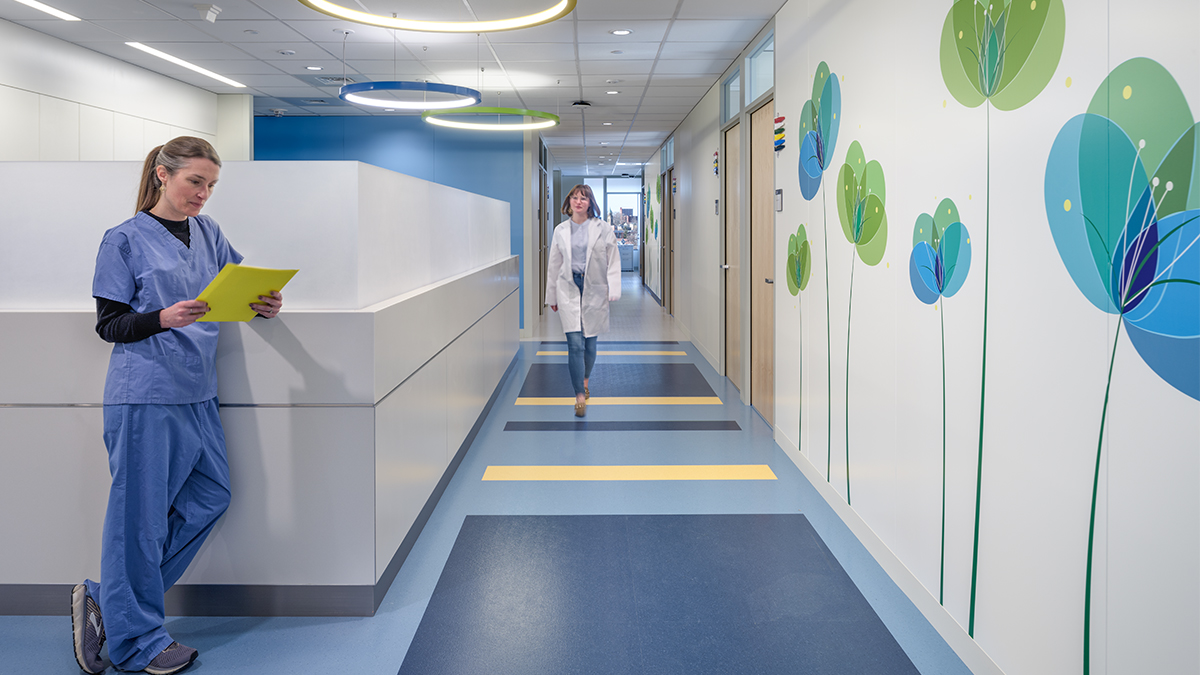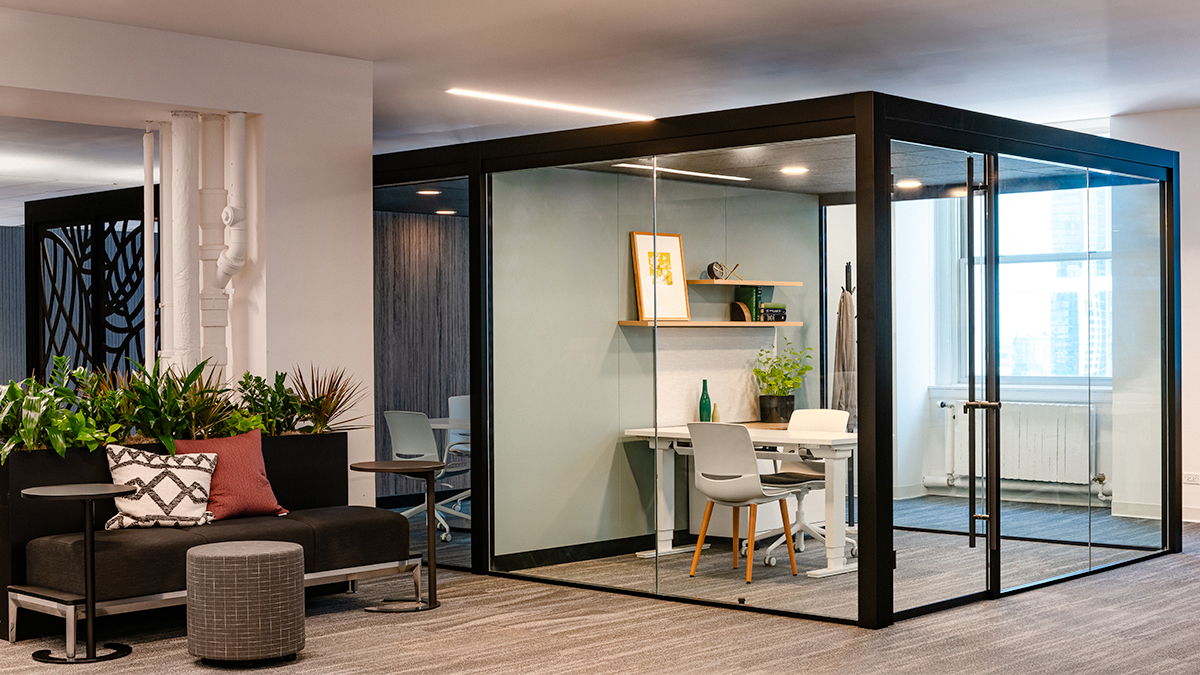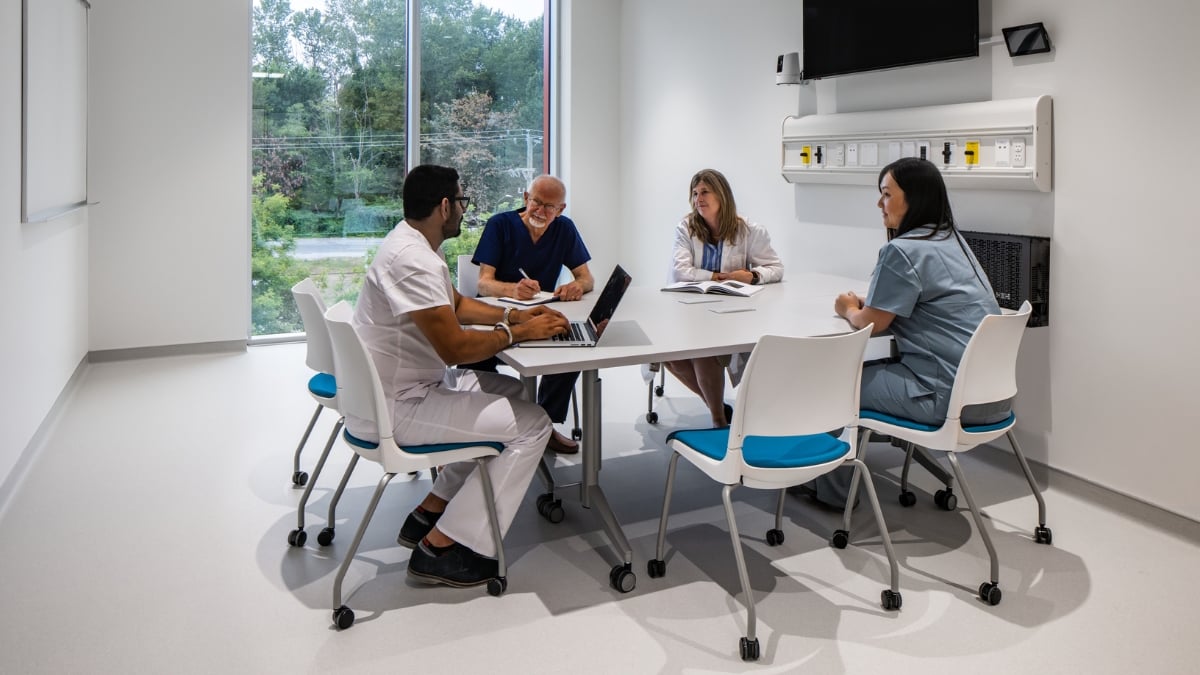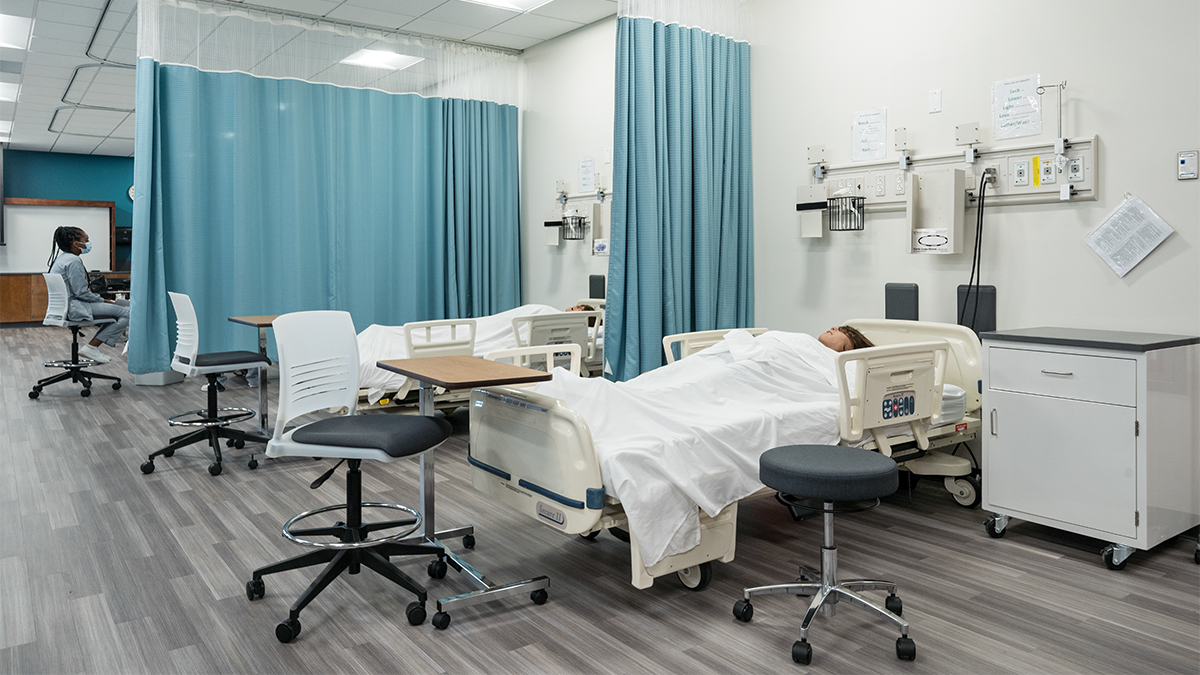- What's New
- Pricing & Purchasing
- Lead Times
- Literature & Samples
- Services & Warranties
- Careers
- Find a Rep
Three Critical Healthcare Trends to Watch in 2024

From the rise of retail health clinics to addressing burnout, we see these three critical trends shaping the healthcare industry throughout 2024.
In the dynamic landscape of the healthcare industry, a transformative wave is reshaping the way patients access and experience care. The prevalence of primary care provider shortages and overcrowded emergency rooms has catalyzed the emergence of independent healthcare facilities and urgent care clinics.
In this blog post, we delve into the rising trends we predict will define the healthcare sector in 2024: the proliferation of freestanding healthcare facilities; the escalating issue of practitioner burnout; and the surging demand for convenient access to care.
As the industry evolves, the significance of creating adaptable, efficient, and comfortable healthcare environments becomes paramount. With that in mind, let's explore the changing face of healthcare in the modern age and the pivotal role of design in shaping its future.
1. Independent Healthcare Facilities on the Rise
In recent years, the healthcare industry has struggled with primary care provider shortages and overwhelmed emergency rooms.
These trends have given rise to the growth of freestanding healthcare facilities and urgent care clinics, a pattern we expect to continue into 2024. One market analysis forecasts that by 2029, hospital emergency departments will see 4.8 million fewer patients annually compared to 2019.
These facilities, unaffiliated with a hospital or major health system, meet the needs of patients looking to get a strep test, flu shot, an antibiotic, or see a provider for straightforward healthcare issues. Whereas a patient may have to wait hours in the emergency room or days to schedule an appointment with their family doctor, nurse practitioners and physician assistants are often readily available at these centers.
The Urgent Care Association reports that patient volume has increased by 60% since 2019. The number of urgent care clinics is growing by 7% annually, with the current number of urgent care centers at a record 11,000. The urgent care market was expected to reach a revenue of $48 billion in 2023.
As this market continues to grow, clinics will be looking to equip waiting areas with comfortable lounge furniture that’s durable and cleanable enough to withstand frequent use in healthcare facilities.
2. Doubling Down on Practitioner Burnout and Turnover
A healthcare career is not for the faint of heart. It’s a rewarding profession but often physically taxing and emotionally draining.
The burnout rate among health workers is up 14% from 2018, according to a CDC survey. And, in 2022, 44% of health workers reported they intended to look for a new job, compared to 33% four years prior. Turnover is highest among certified nurse assistants at 35% and registered nurses at 27%, according to NSI Nursing Solutions.
Long hours and emotionally taxing work are just a part of what healthcare practitioners are up against. Assaults on medical professionals perpetrated by patients have skyrocketed in recent years. Even data from 2018, the most up-to-date government data available, shows that healthcare workers are five times more likely to experience workplace violence compared to workers in other industries.
Retention will continue to be a focus for healthcare employers looking to create attractive workplaces and protect their bottom line. For each one percent increase in the turnover rate for registered nurses, hospitals lose an estimated $380,000 per year.
Creating a safe, welcoming workplace with growth opportunities can positively impact whether healthcare employers retain talent. Investing in spaces to provide support—from continuing education classes to safety and de-escalation training—can support this goal.
3. Growing Demand for Convenient Access to Care
Comfortable and convenient aren’t always the first words that come to mind when you think of going to the doctor. However, the healthcare industry is rapidly adapting to meet the growing demand for accessible and convenient care.
Telehealth continues to grow at a rapid pace. We started 2023 with a 7% increase in telehealth use nationwide and we expect more growth in 2024. Satisfaction with telehealth is high among both physicians and patients, according to the American Medical Association.
Many healthcare providers are seeing patients in person and virtually from the same clinic. We’re seeing more healthcare facilities upgrade their physical environments to be more telehealth-friendly by incorporating privacy pods with acoustic and visual privacy and creating training spaces to teach providers how to use technology for video appointments.
Retail clinics, located in pharmacies like CVS or grocery stores like Walmart or Target, are also on the rise. Of the 2,700 retail clinics nationwide, 74% are located in the South and Midwest. And patients are using them. Claims at retail clinics have jumped 200% since 2018, compared to 70% for urgent care clinics, another growing market.
From a design perspective, retailers can consider freestanding structures designed to create private group meeting spaces within existing open spaces, as well as comfortable lounge furniture.
Healthcare in a Modern Age
As the healthcare sector undergoes significant changes, the importance of creating an efficient, safe, and comfortable environment cannot be overlooked.
The growth of urgent care clinics, the increasing focus on tackling practitioner burnout, and the demand for more convenient access to care, all point toward the need for adaptable and durable furnishings in healthcare facilities. With solutions such as privacy pods for telehealth sessions, comfortable lounge furniture for waiting areas, and transformative spaces for ongoing training, healthcare providers can enhance the experience for both practitioners and patients, ultimately leading to improved care and satisfaction.
For additional insights into the design shifts we're keeping an eye on this year, explore our blog post on 2024 workplace trends.
Related Content
 Blog
Blog
From artificial intelligence to a booming industrial market, here are four workplace trends to watch for in 2024.
 Blog
Blog
Virtual healthcare is here to stay. Here’s how patients and hospitals are responding, with insights on how intentional design can smooth the transition for patients and providers alike.
 Blog
Blog
Today's students are tomorrow's healthcare workers. Discover how practical, technology-enabled simulation spaces are preparing a new generation of doctors and nurses for the workforce.
Subscribe
Stay up to date with the latest trends and more.










